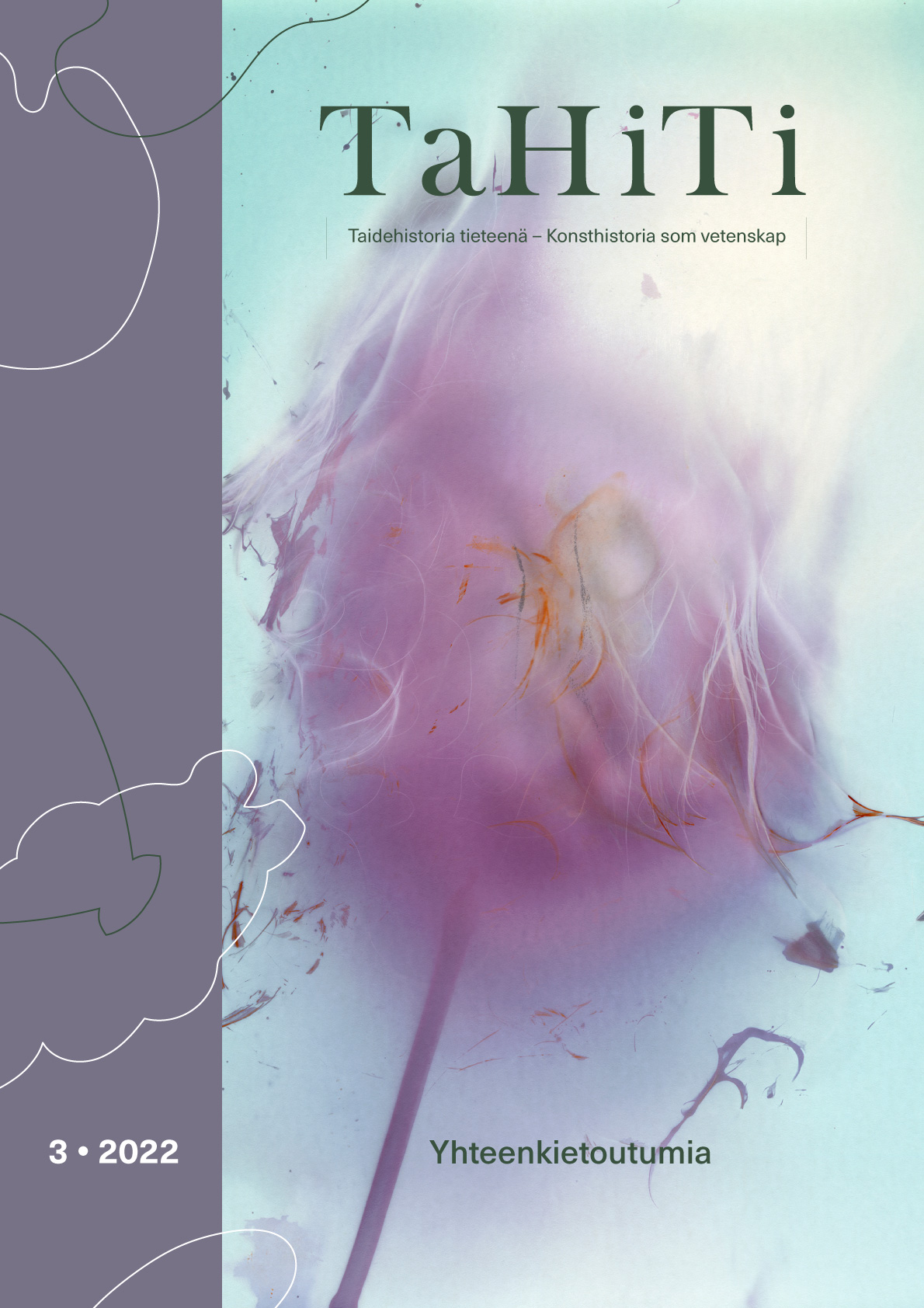Ihmetyksen, empatian ja eläytymisen liikkeitä
Kohtaamisia kasvitaiteen kanssa
Abstract
This article focuses on encounters with plant art. Plant art is approached in ways that aim at opening up and articulating lived intertwinings between the human and the nonhuman worlds. In these encounters, I examine the active agency of living plants in art, and ask what are the possibilities of plant art to affect its viewers and challenge the anthropocentric view of the world. In other words, this article explores the affective power of plant art – its potential to provoke change. First I encounter Raimo Saarinen’s Martyrs (2019), which displays living tulips – tied down with shackles – in a gallery space. I suggest that these twisted, distressed plants that fight for their lives appeal to the viewer’s emotions and sense of empathy. Second, I encounter Jonna Suurhasko’s BIOS4 (2021), an artwork that questions our separateness from other living organisms as it lingers through an exhibition hall and reveals a plant-community living inside of an air ventilation duct. Theoretically the article is based on phenomenology, posthumanism and new materialist art research. Key concepts include Michael Marder’s plant-thinking and Jane Bennett’s vibrant matter, which among others, work as an inspiration for formulating a new methodology, especially applicable for encounters with plant art.


This work is licensed under a Creative Commons Attribution-ShareAlike 4.0 International License.








